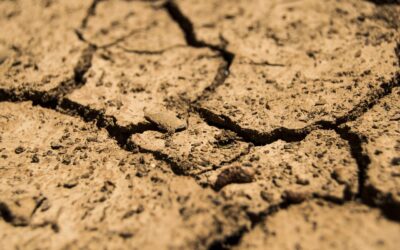When the Canadian Space Agency (CSA) launched its first Synthetic Aperture Radar (SAR) satellite, RADARSAT-1, in 1995, they weren’t thinking about agriculture. But scientists at Agriculture and Agri-Food Canada (AAFC) saw data streams from earth-orbiting satellites as an opportunity to look at agriculture from a stellar new vantage point. Soon, they were using satellite data steams to run crop models and evaluate the ability of fields to drain.
Fast forward to June 2019 when the CSA launched it’s third generation of SAR satellites, the RADARSAT-Constellation, and agriculture is now one of the primary clients and end-users.
Using Satellite Technology for Agriculture
The RADARSAT-Constellation is a series of three SAR satellites. When linked together, they orbit the earth, providing more frequent coverage and more advanced imaging of our agricultural resources.
Dr. Andrew Davidson, manager of Earth Observation Operations at Agriculture and Agri-Food Canada (AAFC), explains that there is no better way to obtain national-scale information on the state and trends of agriculture and resource use than from space.
“Satellites can cover way more ground at a much faster pace than humans, drones or aircraft, and the data can be used to measure things such as crop type, vegetation cover and productivity and surface soil moisture conditions,” he says.
These data are correlated with data from aircrafts, drones, and ground collection networks to produce highly accurate measurements of crops and conditions, with the ability to detect changes quickly.
Davidson underlines that satellites provide the kind of timely, reliable and scientifically validated information that is necessary to help scientists, farmers, producer groups as well as policy-makers make good evidence-based decisions to manage their operations while protecting our natural resources.
AAFC’s Earth Observation Operations is based at the Ottawa Research and Development Centre. They are small, but mighty and the amount of data they manage is impressive.
“Satellites provide imagery; but it is the scientists on the ground who turn it into something useful,” says Davidson.
With other AAFC research scientists, they also manage international collaborations and together, AAFC is acknowledged as global experts in optical as well as SAR satellite technology.
What’s in it for Canadian agriculture?
Much of what Dr. Davidson’s team produces are data sets, maps and forecasting tools that can be accessed online through various AAFC web portals. There are also tools and applications for analysing these data so that decision makers can make informed agricultural management decisions.
The Annual Space-Based Crop Inventory, a product of AAFC research, annually maps the crop type of every field in Canada and is used to detect trends in crop planting practices. It is also critical for other applications, such as warning growers of possible threats such as crop diseases. The inventory is also being used by provinces, private sector and academia to determine how crop agriculture is affecting the surrounding environment including lake water quality and honeybee populations.
“These data have opened up the possibility of enhanced decision making in the agriculture sector,” Davidson says. “And it doesn’t stop there; our ability to help meet the informational needs of the sector is only expected to improve as new satellite sensor technologies are launched, brought online, and made available.”
All in all, earth observation research is helping the Canadian agricultural sector thrive and the launch of Canada’s new RADARSAT-Constellation satellites will continue to benefit future generations of Canadians by protecting food production systems and the environment.
More information on the RADARSAT-Constellation Mission can be found on the Canadian Space Agency “What is the RADARSAT Constellation Mission” webpage.
Key Discoveries/Benefits
- The Canadian Space Agency (CSA) launched its latest Synthetic Aperture Radar (SAR) satellite, RADARSAT-Constellation, in June 2019.
- Data from earth-orbiting satellites produce highly accurate measurements of crops and conditions, with the ability to detect changes more quickly.
- Satellites provide timely, reliable, and scientifically validated information that helps make good, evidence-based decisions to manage farming operations and protect natural resources.
Source: Agriculture and Agri-Food Canada





